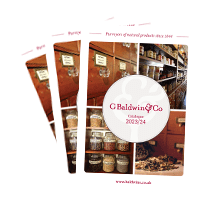Personalised Easter Eggs: A Guide to Creating Beautiful and Unique Designs
Easter is a special time of year, but after the excitement of the egg hunt, you might find yourself wondering how to keep the kids entertained. Instead of letting them resort to watching TV or playing in their rooms, why not try a creative and fun activity that will engage their imagination? Personalising Easter eggs is a delightful project that both children and adults can enjoy.
Understanding Natural Egg Dyeing
Natural egg dyeing is an age-old Easter tradition that can add a unique touch to your celebrations. While some cultures also dye eggs to celebrate other occasions like the summer solstice, it is particularly fitting for Easter. By using natural ingredients, you can create a range of beautiful and vibrant colours for your eggs.
Creating Natural Dyes
Creating natural dyes for your Easter eggs is surprisingly simple, and you may already have many of the necessary ingredients in your kitchen. Here are some examples of ingredients you can use to achieve different colours:
- Black: Black walnut or alder
- Blue: Elderberries, elecampane, cornflowers, or indigo root
- Brown: Burdock, comfrey, fennel, onion skins, juniper berries, or tea leaves
- Yellow: Turmeric, safflower petals, chamomile, green tea, saffron, or juniper leaves
- Orange: Carrots, paprika, onion skins, or tansy shoots
- Green: Spinach leaves, angelica, marjoram, rosemary, tansy, yarrow, or hyssop
- Red: Dandelion root, St. John's Wort flowers, ladies bedstraw, oregano, sweet woodruff, or hops
- Purple: Red cabbage, violet flowers, or red grape juice
- Pink: Sorrel root, chicory root, madder root, beetroot, raspberries, or cranberries
Tip: For more intense colours, you can experiment by combining different dyes or over-dying the eggs.
Methods for Dyeing Your Eggs
There are two primary methods for dyeing your eggs, depending on the decoration style you prefer. Let's explore both techniques:
Method One: Using Leaves and Flowers
Materials needed:
- White eggs
- Flowers and leaves for decoration
- Pot of water
- Natural dye (choose from the ingredients listed above)
- 1 tablespoon of vinegar to intensify the dye
- 1 pair of old tights (skin-colored recommended)
- Thread
Instructions:
- Cut the tights into 4"-5" sections and tie off one end of each piece.
- Wash the eggs with soapy water to remove any oils, then dry them and refrigerate until you're ready to add the decorations.
- Select leaves or flowers with distinct shapes that can be pressed flat against the eggs. Flatten them and wrap them around the eggs.
- Carefully place the decorated egg into a tight pouch, ensuring the leaf or flower remains in place, and tie off the other end of the tights. Make sure the tights are stretched tightly over the egg to secure the decoration.
- Prepare the dye by adding the chosen dye material, vinegar, and eggs to the water. Boil for approximately 20 minutes.
- Remove the eggs from the water, cut them out of the tight pouch, and rinse them.
- The eggs can be eaten, but after boiling for 20 minutes, they are primarily used for decoration purposes.
Method Two: Using Herb Infusions
Materials needed:
- 3 teaspoons of white vinegar
- 250ml of water
- White eggs
- Herbs, spices, or berries (quantity depends on the desired color intensity)
Instructions for the cold method:
- Hard-boil the eggs and allow them to cool before dyeing.
- Prepare the dye by adding the herbs, spices, or berries to 250ml of water and bringing the mixture to a boil in a pan.
- Reduce the heat and let the mixture simmer for 15 minutes (or longer for more vibrant colours).
- Remove the pan from the heat and pour the dye mixture into a measuring jug. Add 3 teaspoons of white vinegar.
- Pour the mixture into a bowl that is deep enough to fully submerge the eggs. Lower the eggs carefully into the hot liquid using a slotted spoon.
- Allow the eggs to soak in the dye for as long as desired. Note that longer soaking times will result in deeper colors.
Instructions for the hot method:
- Follow the same steps as for the cold method to create the herb dye.
- Place the eggs into the dye in a pan and bring the mixture to a boil. Let it boil for 10-30 minutes (not longer than 30 minutes) and then remove from heat.
- You can either remove the eggs from the dye immediately or leave them to soak in the dye in the refrigerator. Regardless, remove the eggs from the dye, allow them to dry, and return them to the refrigerator.
- Hard-boil the eggs and allow them to cool before dyeing.
- Prepare the dye by adding the herbs, spices, or berries to 250ml of water and bringing the mixture to a boil in a pan.
- Reduce the heat and let the mixture simmer for 15 minutes (or longer for more vibrant colours).
- Remove the pan from the heat and pour the dye mixture into a measuring jug. Add 3 teaspoons of white vinegar.
- Pour the mixture into a bowl that is deep enough to fully submerge the eggs. Lower the eggs carefully into the hot liquid using a slotted spoon.
- Allow the eggs to soak in the dye for as long as desired. Note that longer soaking times will result in deeper colors.
Instructions for the hot method:
- Follow the same steps as for the cold method to create the herb dye.
- Place the eggs into the dye in a pan and bring the mixture to a boil. Let it boil for 10-30 minutes (not longer than 30 minutes) and then remove from heat.
- You can either remove the eggs from the dye immediately or leave them to soak in the dye in the refrigerator. Regardless, remove the eggs from the dye, allow them to dry, and return them to the refrigerator.
Tip: If you want to add additional decorations, such as drawings or shapes, do so before dyeing the eggs, as the wax won't absorb the color.
Now that you have learned these two methods, you can create beautiful and personalised Easter eggs. Enjoy the process with your children, and let your creativity shine. These unique eggs will make a delightful addition to your Easter celebration.







 Looking for Qualified Advice on Herbs & Supplements?
Read our health guides, quick tips and popular posts on a range of health conditions, products & fitness
Looking for Qualified Advice on Herbs & Supplements?
Read our health guides, quick tips and popular posts on a range of health conditions, products & fitness
 At number 64, our Walworth Road Shops are featured in Time out London’s
100 best shops and we couldn’t be more delighted!
At number 64, our Walworth Road Shops are featured in Time out London’s
100 best shops and we couldn’t be more delighted!

 View our Catalogue online.
It is stocked full of our latest oils, beauty products, health foods & gifts.
View our Catalogue online.
It is stocked full of our latest oils, beauty products, health foods & gifts.